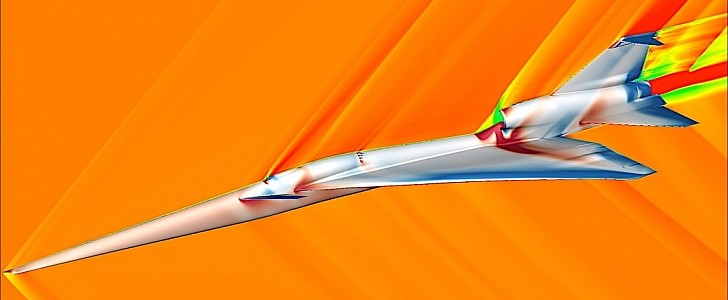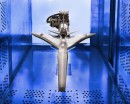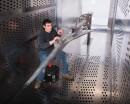Work on NASA’s and Lockheed Martin’s supersonic X-59 Quiet SuperSonic Technology airplane (QueSST) is moving ahead as planned, with the agency aiming to take to the skies soon. Presently, engineers are hard at work coming up with computational fluid dynamics simulations to advance their goals.
The X-59, designated as the first NASA X-plane to enter production in 30 years, is a demonstrator meant to prove that supersonic flight over land could be achieved without breaking any laws that forbid it on account of sonic booms.
To do this, NASA has designed an airplane concept like no other, with a delta wing and the 30-foot-long (9-meter) nose that allows for no windows, not even for the pilot, to be fitted on it. This shape is required because of how NASA envisions the airplane to cut through the air and go supersonic without the sonic boom.
A sonic boom is generated when an aircraft creates a series of pressure waves in front and behind. The waves in front, which move at the speed of sound, are squashed together until they merge into one wave.
That creates a rise in pressure at the nose of the plane, followed by a return to normal pressure when the airplane passes through the wave with a boom. NASA hopes the shape of its X-59 will scatter multiple shock waves and minimize their cumulative effect.
Because the aircraft is still under construction, NASA has no other way to test its theories than to go for computational fluid dynamics simulations, which are responsible for creating the main photo of this piece, one that shows how the aircraft cuts through the air.
These simulations will be used to create a database that will be used to “verify the aircraft’s supersonic performance,” and will include “simulations for all possible combinations of the settings that a pilot uses to control the aircraft and the flight conditions that may be encountered during flight.”
When the build is ready, the QueSST will take to the sky over yet-to-be-determined American cities, and residents will be asked to “share their response to the sound the aircraft generates during supersonic flight.”
A date for the start of the test flights has not been set yet.
To do this, NASA has designed an airplane concept like no other, with a delta wing and the 30-foot-long (9-meter) nose that allows for no windows, not even for the pilot, to be fitted on it. This shape is required because of how NASA envisions the airplane to cut through the air and go supersonic without the sonic boom.
A sonic boom is generated when an aircraft creates a series of pressure waves in front and behind. The waves in front, which move at the speed of sound, are squashed together until they merge into one wave.
That creates a rise in pressure at the nose of the plane, followed by a return to normal pressure when the airplane passes through the wave with a boom. NASA hopes the shape of its X-59 will scatter multiple shock waves and minimize their cumulative effect.
Because the aircraft is still under construction, NASA has no other way to test its theories than to go for computational fluid dynamics simulations, which are responsible for creating the main photo of this piece, one that shows how the aircraft cuts through the air.
These simulations will be used to create a database that will be used to “verify the aircraft’s supersonic performance,” and will include “simulations for all possible combinations of the settings that a pilot uses to control the aircraft and the flight conditions that may be encountered during flight.”
When the build is ready, the QueSST will take to the sky over yet-to-be-determined American cities, and residents will be asked to “share their response to the sound the aircraft generates during supersonic flight.”
A date for the start of the test flights has not been set yet.





